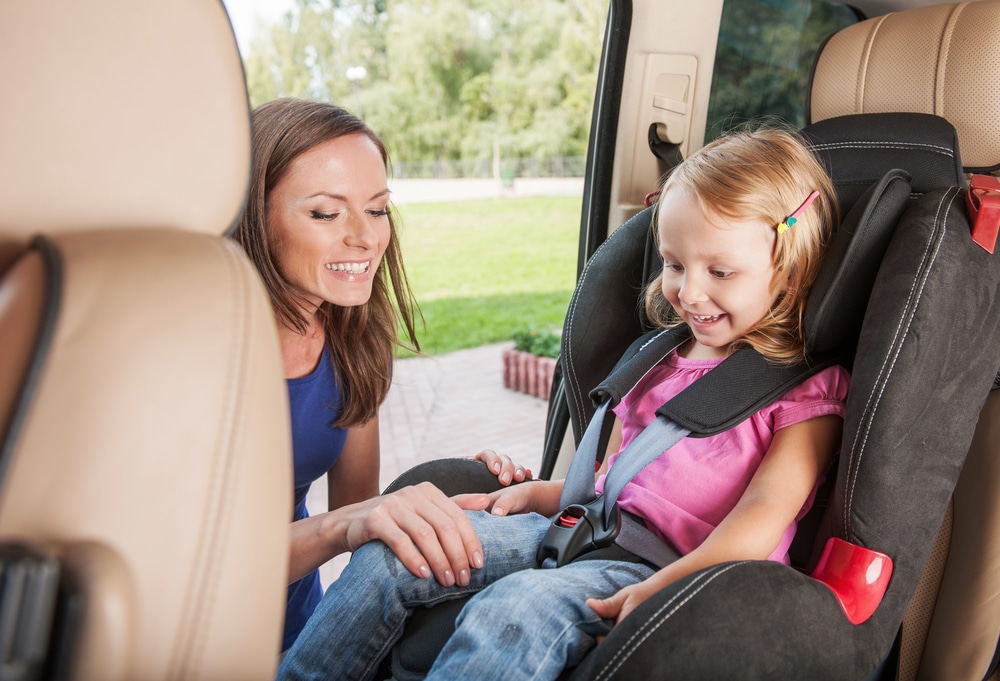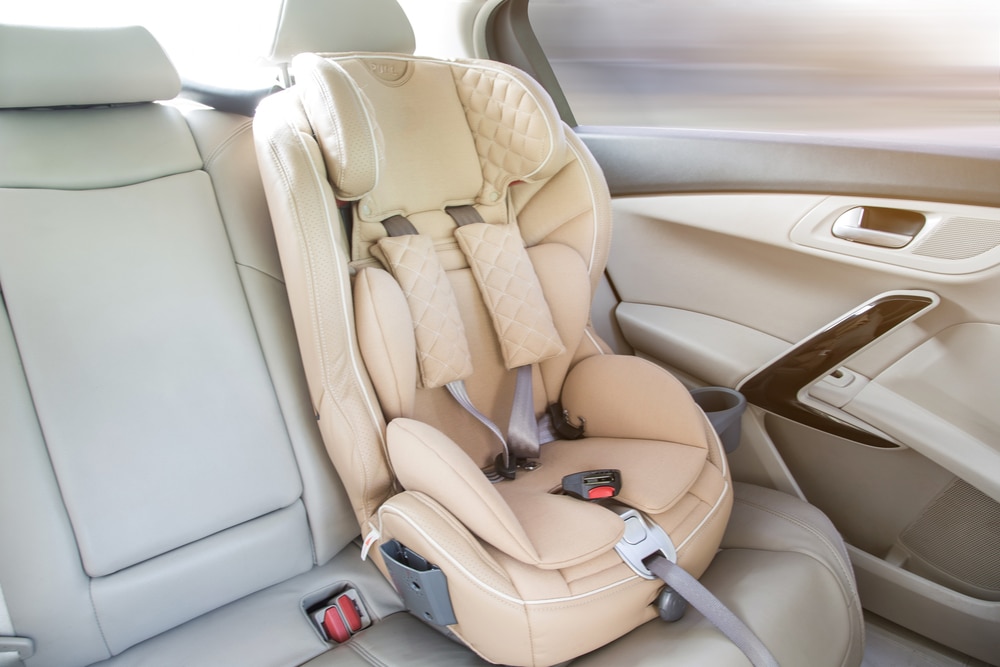North Carolina car seat laws are designed to keep your most precious and vulnerable family members safe. Your children must be secured while driving to avoid dangerous situations and injury during a collision at a young age.
NC car seat laws may differ slightly from similar laws in other states across the nation, so it’s essential to review them all carefully to ensure safety and compliance with the law. We’ll go through NC child seat laws in the sections to follow.
NC Car Seat Laws: General Overview

Overall, there are specific laws that address the age range of your child. Additionally, some laws vary based on the child’s height and weight, which can sometimes alter a law based on age.
While some states insist that children under 12 be considered for car seats and booster seats, car seat laws in NC stretch to cover children younger than 16 years of age, depending on measurements; furthermore, all seat belt laws apply to children and adults over the age of 16.
Unlike many other states, NC child seat laws do not specify or require the specific types of seats that you should use for a certain age, meaning they do not require by law that a certain age should remain in a rear-facing seat or graduate to a forward-facing seat.
That being said, they impose that a child needs to be in a seat that is appropriately-fitted for age and weight. Many of these recommendations come with the car seat manufacturer’s guide.
These are the ideal seat recommendations according to the type of seat:
- Rear-facing car seat: Children two years of age or younger should use a rear-facing car seat to ensure the most safety. Most standard rear-facing seats are weight-rated up to 35 pounds and are ideal for infants and babies.
- Forward-facing car seat: Any child two years or older who outgrows the height and weight requirements for a rear-facing car seat should transition to a forward-facing seat. Moreover, this generally applies to children 40 pounds or heavier.
- Convertible car seat: A convertible car seat can be used both forward- and rear-facing and typically support up to 45 pounds. You may use this seat accordingly.
- Booster seat: A booster seat is commonly used for a child who outgrows their car seat but is still not tall enough to use an adult seat belt properly. These requirements vary by product but always list their height and weight recommendations. NC booster seat laws require parents or guardians to follow these guidelines.
So long as you are following each product’s height and weight requirements listed above, the state of North Carolina considers you within the law.
Car Seat Installation

Another strict area of North Carolina car seat laws involves proper car seat installation. There are various ins and outs of these laws that must be followed by parents or guardians using car seats or booster seats.
In terms of rear-facing car seats, products must be installed in the back of the vehicle according to NC’s car seat laws. It is also critical that your child’s head is more than one inch below the top of their seat for safety reasons.
On the other hand, a forward-facing car seat in North Carolina measures slightly differently. Rather than the top of a child’s head, the top of the child’s ears must be below the seat’s top. This same rule applies to convertible car seats.
If your child is using a booster seat in this state, it must allow for them to use an adult seat belt properly. Moreover, this means that the lap belt rests below your child’s hips and not at their stomach. It also includes the shoulder belt, which should rest above their shoulder and secure snuggly across their chest.
Any North Carolina resident can contact the North Carolina Department of Public Safety or visit a Permanent Checking Station to ensure that they meet all state requirements for car seats and booster seats.
Age, Height, and Weight Laws
Sometimes it’s easier to understand laws when you can apply them to your child’s specific age, height, or weight, rather than searching through car seat styles. Below, we have some details concerning age, height, and weight laws in North Carolina.
- Five years old or younger: Any child who is younger than five years of age AND weighs less than 40 pounds must sit in a rear seat, according to the state laws. While not specified, it is recommended that this same range uses a rear-facing car seat.
- Eight years old or younger: All children eight years or younger must sit in a rear seat using the appropriate restraint system for their weight. Moreover, if this age group weighs less than 80 pounds, NC state law requires that they use either a car seat or a booster seat. However, if this age range weighs between 40 and 80 pounds, they may use a lap belt or a properly-fitted lap and shoulder belt.
- Sixteen years old or older: Anyone age sixteen or older must follow all NC state seat belt laws.
According to car seat laws in NC, certain vehicles are exempt from the car seat and seat belt laws. Moreover, this includes any cars built before 1967 and large buses, vans, SUVs, and pickup trucks made before 1971.
Emergency vehicles such as ambulances are also exempt from these laws.
Related States: Car Seat Laws in Massachusetts | Arizona Car Seat Laws | Idaho Car Seat Laws
Proper Car Seat Harness Adjustments
Because NC car seat laws allow for some flexibility in terms of rear-facing, forward-facing, and booster car seat options, it’s even more critical that you are aware of the proper way to close and adjust your child’s harness. According to federal regulators, a secure fit can mean the difference between injury and safety in a collision.
Some common mistakes when harnesses a child in a car seat include the following:
- Failing to re-adjust the straps as your child grows
- Not adjusting straps to ensure even tightening on both sides of the harness
- Leaving a harness unbuckled or not buckled all the way
There are a few steps you can take to ensure you do not make these mistakes. The first, of course, is always to take your time to make sure you hit every step along the way.
You should always make sure your child’s straps are at the right level of tightness. A loose harness can cause your child to move around too much, which is highly dangerous during a car crash.
To prevent this from happening, remove any slack you see or feel in the harness. You should not be able to pinch together any length of the straps. To check to make sure the harness isn’t too tight, slide two fingers under the belt. There should be enough room to do this, but not enough to pinch the webbing on the shoulders.
When using a rear-facing car seat, the harness should be at or below your child’s shoulders. The harness should rest at or above the shoulders for the best protection in a forward-facing car seat.
Always check to make sure the straps on either side of the harness are even. Uneven straps can distribute weight disproportionately, which can cause injury. We hope this article has made you wiser and keeps you up to date with NC Car Seat Laws.






